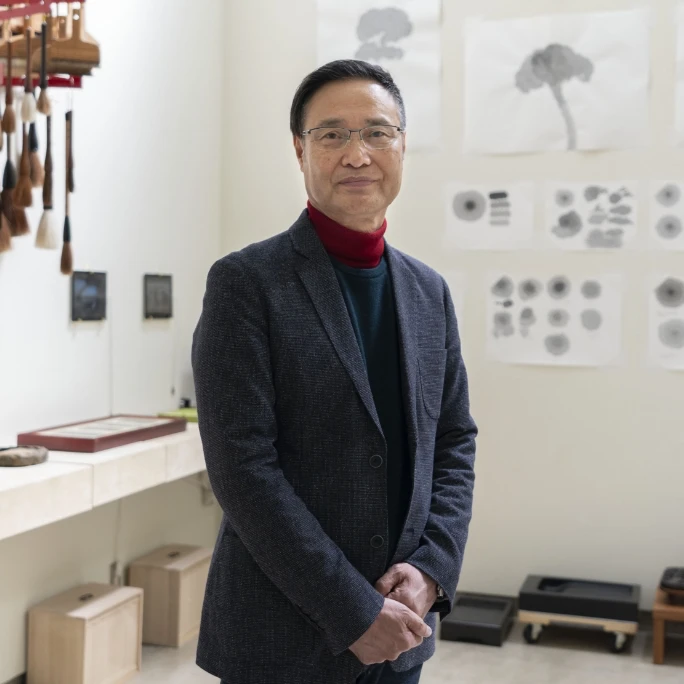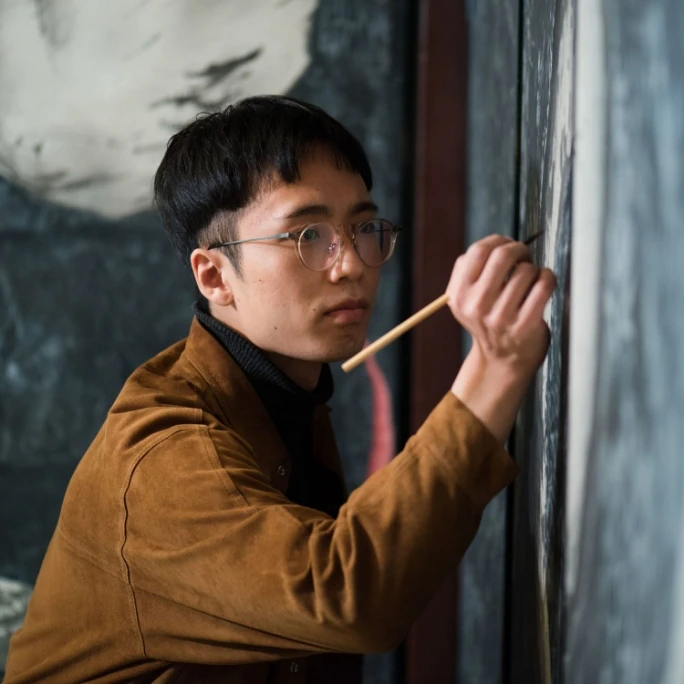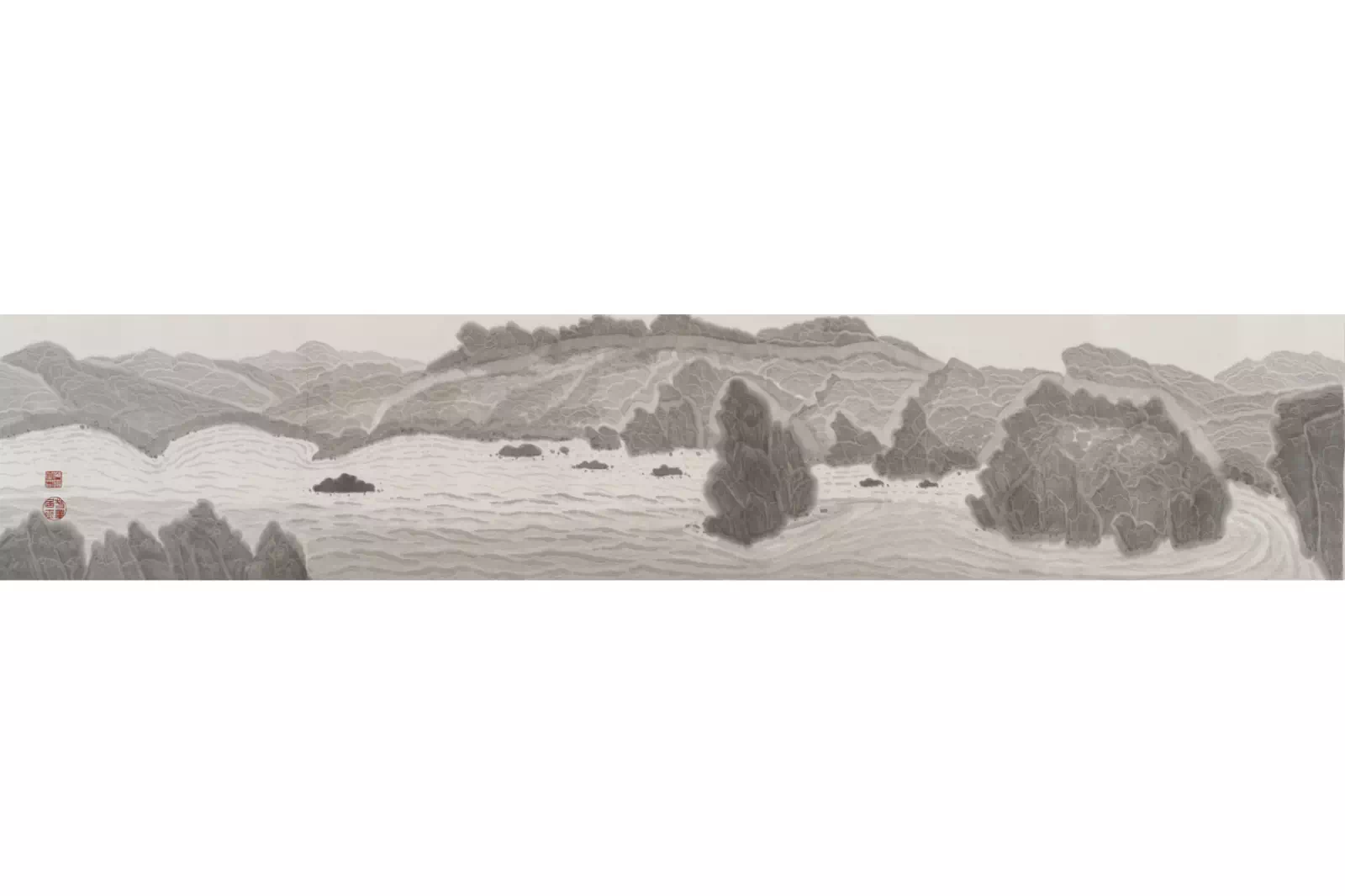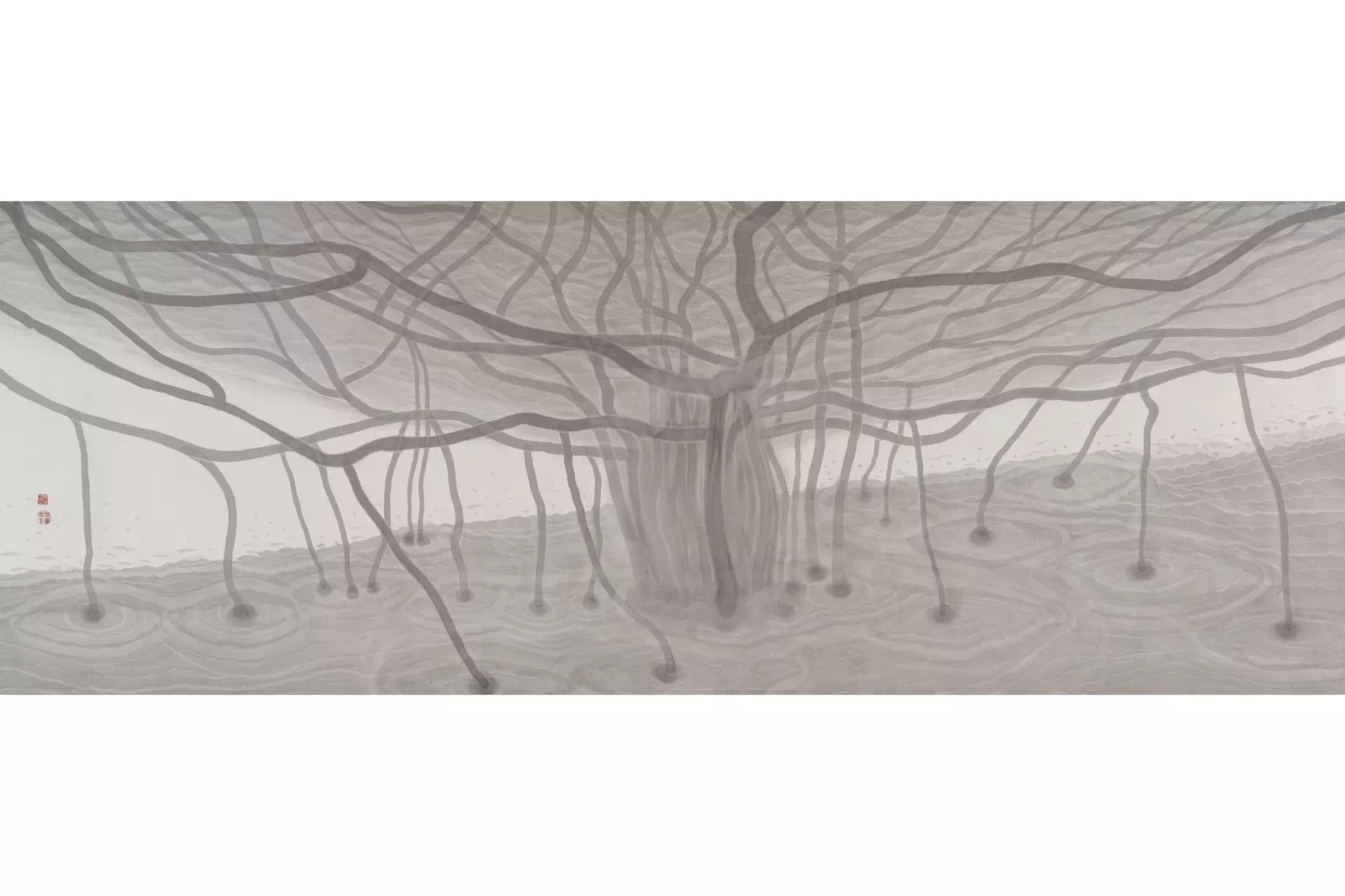- YAMBARU ART FESTIVAL
- YAMBARU ART FESTIVAL
- YAMBARU ART FESTIVAL
- YAMBARU ART FESTIVAL
- YAMBARU ART FESTIVAL
- YAMBARU ART FESTIVAL
- YAMBARU ART FESTIVAL
- YAMBARU ART FESTIVAL
- YAMBARU ART FESTIVAL
- YAMBARU ART FESTIVAL
- YAMBARU ART FESTIVAL
- YAMBARU ART FESTIVAL
- YAMBARU ART FESTIVAL
- YAMBARU ART FESTIVAL
- YAMBARU ART FESTIVAL
- YAMBARU ART FESTIVAL
- YAMBARU ART FESTIVAL
- YAMBARU ART FESTIVAL
ARTIST
ART PROGRAM
Yoshiaki Aoki & Yuta Niwa
Driven by the Gods
Daisekirinzan, situated across Cape Hendo, is a mountain range known for its giant rocks and subtropical nature, considered sacred since ancient times according to Ryukyuan mythology.
Stepping into the mountains, Yoshiaki Aoki encountered Shumisan, his longstanding theme, and witnessed the paradise of the Pure Land.
Having painted Western-style paintings for 45 years, he parted from Western painting at the age of 60. At the same time, he had been applying old sumi ink to tempera painting for 45 years, and had felt the high potential of sumi ink.
He was liberated from the sense of entrapment of Western painting by the ink paintings of Jakuchu Ito in the 18th century.
The ink solution permeates the inked paper vertically and spreads horizontally at the same time, creating a flat yet three dimensional surface.
This value is shared by China, Taiwan, the Korean peninsula, and Japan in East Asia.
Especially in the soft-water zone of Japan, the ink expression that differs from that of the hard-water zone of East Asia is represented by Jakuchu Ito's stripe paintings.
There was no such work before or after Jakuchu, which was considered to be an evil way or a violation of the law at the time. (After the war in the Showa period, we can see the use of the "suji-guji-gaki" technique in the expression of the waves of undyed iron).
In contrast to the photographic style of Western painting, ink on raw paper has a naturalistic feel that spreads outward.
The world of "Paradise" that he is aiming for requires an expansion into the universe that penetrates through the heavens, and he personally admire the inevitability that led Jakuchu and Fusen Tetsu to seek out Ming ink and paper from the Qianlong period, and it cannot be realized without the concept of raw paper and old ink.
Looking up from the entrance of the science preparation room to the right wall, we see "Shinjyuku" (1) (118 x 524 cm) and look down at "Origin of Life" on the marble table in the center of the room.
On the 10 glass doors of the storage cabinet behind it, Yoshiaki Aoki and Yuta Niwa collaborated on the theme of "Yanbaru" in this exhibition as well, following the "Koku Koumei" exhibition at Koumeiin in 2022.
※①Kamiyadoru
Standing on the opposite shore from Cape Hendo overlooking Daisekirinzan, one can see the world of Mt. The huge and oddly shaped rocks are inhospitable to mundane people, and only gods are allowed to descend.
People are invited to pray to Mount Sumeru. Yoshiaki Aoki suddenly realized for the first time that the land of Yanbaru was Mount Sumeru.
exhibition
hall
PROFILE

Yoshiaki Aoki
Artist (techniques and materials studies). 1953: Born in Naka City, Ibaraki Prefecture. 1976: Studied in Paris and received the Honorary Prize of Le Salon. 1977: President of Chuo Art Institute (retired in 2013). 1983-1984: Studied in Paris. 1989: Exhibited at the Yasui Prize Exhibition. 1991: Exhibited at the Tokyo Central Museum Oil Painting Grand Prize Exhibition. 1996: Solo exhibition at Shiseido Gallery, Ginza, Tokyo. 1997: Exhibited at the Yasui Prize Exhibition and the NHK Heart Exhibition. 1999: Founded and represented Academia Platonica. 2007: Visiting professor at Kyoto University of Art. 2011: Professor at Kyoto University of Art. Published "Understanding Painting Materials Today" (Seikatsu no Tomosha). Chairman of Kyoto Technique Materials Research Association (dissolved in 2023). 2015-2018: Moderator of the 21st Century Takagamine Forum. 2015: Involved in the discovery and restoration of two paintings by Hasegawa Tohaku. Advisor of Terada Warehouse PIGMENT (Pigmon). 2016: Awarded the 8th "Creating Traditions Prize" by the Japan Arts and Culture Foundation. 2018: Presenter of the "Nara Sumi" traditional craft designation. From 2021: Has been writing a series of articles "This is all you need to know - basic knowledge of painting ink" in a quarterly magazine, Bijutsu-ya "Hyakubei." Now: Professor at Kyoto University of Arts Graduate School, President of Academia Platonica, Advisor to Kuretake Co.

Yuta Niwa
Painter. While using the context and technical materials of Japanese painting, he creates his works by focusing on historical times in which invisible disasters and irresistible forces are depicted as dark entities.
In 2019, after completing the graduate course in painting at Kyoto University of Arts, he went to Beijing to study. He is currently living and working at Koumyouin, the pagoda of Tofukuji Temple.
His recent major exhibitions include the Art Collaboration Kyoto "Golden Fight of Gods," solo exhibition "Chimera Epidemic," MIDTOWN AWARD 2021, solo exhibition "Namazu no Koumyou," Yanbaru Art Festival Yamahara Chishin, Art Award Marunouchi 2019, and more.

